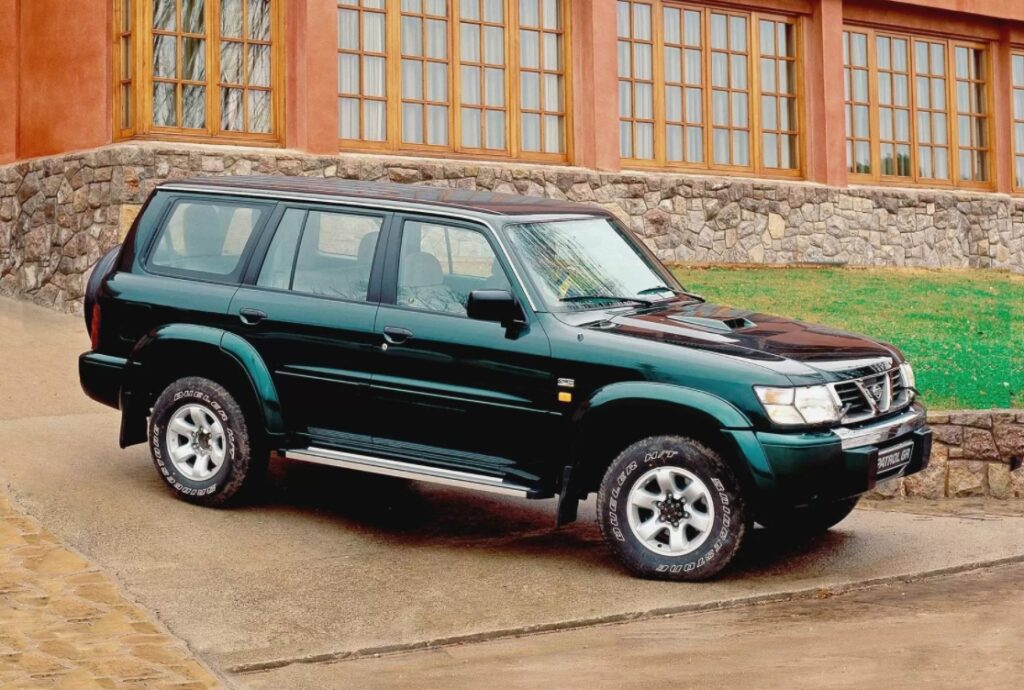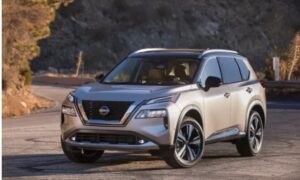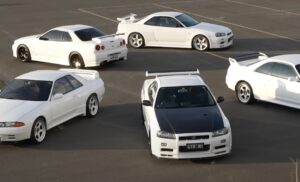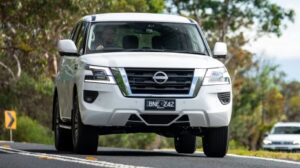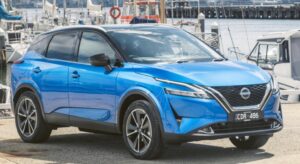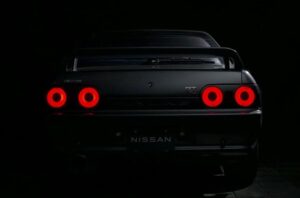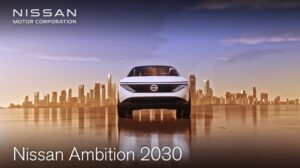The history of the glorious family with the name Patrol began in 1950, when an advisor to Nissan (then called Datsun), a retired artilleryman Shijita Murayama, who received a fragment of an American shell in his kneecap during the war, and in five years of peace managed to earn the nickname “Lame Success”, By hook or by crook, he made a state order for his company for the creation of four-wheel drive vehicles for the police, forestry and municipal services. So the first Patrol was born with the index 4W60, similar to Willys – overgrown. It is not surprising, because Shijita Murayama made his first money on the repair and maintenance of cars of the American occupation forces, and used the frame, bridges and engine from a one and a half ton truck as a technical basis for his SUV.
The next generation Nissan Patrol (in the Japanese market – Safari, in Australia this car was sold under the MQ index), index 160, was released in 1980. This car, distinguished by a very comfortable body by the standards of that time, a range of powerful in-line six-cylinder engines (2.8-liter petrol and 3.3-liter diesel) and two wheelbase options, brought the company to a new level. Simply put, the Patrol 160 has played in the history of the company the same role that the famous “sixty” Land Cruiser FJ60 plays in the history of Toyota. The Nissan concern was literally overwhelmed with orders!
Then there was a period of evolutionary development and expansion into world markets, and in 1988 a new, more advanced Patrol GR car with a factory index Y60 (in Australia – GQ) took a place on the main Nissan assembly line. The letters G and R were added to the name for a reason. They stood for the Grand Raid and marked the Patrol’s past and future victories on the marathon rally-raid tracks. This was largely due to the new Patrol GR Y60 spring-link suspension, which combined exceptional endurance with decent handling.
Finally, 10 years later, in 1998, a fundamentally new model Y61 (in Australia – GU) was born, allowing Nissan to enter the elite club of luxury SUVs and compete with the Toyota Land Cruiser 100 released in the same year (in fact in fact, production was started back in 1997, after the Frankfurt Motor Show, but the car went on sale as a “model of 1998”, and this figure was fixed in all documents).
And here’s what is interesting: the chassis of the new car has remained practically unchanged, to the point that the frame and axles of the Y60 and Y61 are interchangeable! When creating a new car, Nissan decided that it was not worth instilling good road manners in the car at the expense of abandoning the eternal off-road values. Perhaps they simply foresaw that most firms would follow the “asphalt” path, because already at that time, sociological data asserted that most of the owners of expensive SUVs simply never leave the asphalt, or maybe they hoped to attract those customers for which reliability of the car and its ability to overcome “directions” were just as important as ride comfort. Well, if so, then they do not look for good from good.
Moreover, the off-road capabilities of the new flagship have even increased due to the use of an openable rear stabilizer. By the way, a similar design, only with a manual drive, had already been tested on the Nissan Safari Y60 sold in the Japanese market by that time, and it really showed its effectiveness in improving the articulation of the suspension on rough terrain. Another important innovation was the unique automatic free-wheel clutches of the front wheels with the possibility of their forced closing.
The Y61 began its life path with engines inherited from its predecessor: for Europe it was mainly intended for the 2.8-liter RD28T turbodiesel, and for other markets – the 4.5-liter TB45E gasoline “six” and the TD42 diesel engine. At the turn of the millennium, a new product was registered under the Patrol hood – a four-cylinder ZD30 turbodiesel with a displacement of 3 liters, intercooling of charge air, direct fuel injection controlled by the electronics of the high-pressure pump, and a combustion chamber in the piston. This engine developed 158 hp. at 3600 rpm and gave out at 2000 rpm 354 Nm of torque.
In 2003, another change took place in the line of engines: instead of the 4.5-liter “six” TB42, the TB48 engine with a volume of 4.8 liters and a capacity of 245 hp went to the conveyor. By the way, Russia became the only country in Europe where cars with this engine were supplied. In the bowels of Nissan headquarters, they finally decided that the policy of 100% diesel in our incomprehensible country leads to loss of customers and losses. In addition to the new motor, the Patrol also received a new five-speed automatic transmission with the ability to manually shift gears.
Finally, in November 2004, the updated Nissan Patrol was presented to the public. Restyling touched the interior and most of the outer panels, the car received new bumpers and optics, but remained quite recognizable.
Before proceeding directly to what the Patrol Y61 owners praise and scold for, it is necessary to say a few words about the sources of these cars in Russia. As a matter of fact, all “Patrols” are divided into “Russians” (that is, cars officially sold through a dealer network), “Europeans”, “Japanese” (which, of course, are called not Patrol, but Safari) and “Arabs”. Because the global Nissan company is very sensitive to adapting its vehicles to specific markets, the National Patrols can have very significant technical differences, in addition to the fact that all markets differed in the range of engines offered. For example, in a “purebred Arabian horse” with a petrol 4.8-liter engine there will be a five-speed automatic transmission with the possibility of sequential manual switching (and not an outdated, albeit reliable “four-speed”, as in a diesel “European”), cruise control, two fuel tank with separate necks, brought out under a common hatch, navigation system, dashboard FINE VISION, standard xenon headlights, subwoofer, stylish chrome handles and mirrors … But there will be only one battery instead of two, as well as inevitable problems with interior heating.
Indeed, few of the owners of “Patrols” can boast that a modern (at least by the standards of the first decade of the 21st century) media system is installed in their car. In fact, almost every second review of this car says “threw out the standard” music “, put a normal system (Alpine, Blaupunkt, Boston Acoustics …) in the 2DIN form factor, with navigation, bluetooth, rear view camera, amplifier and a subwoofer, well, I invested in sound insulation, and after that life became easier, it became more fun … “
Yes, in general, few people name noise among the significant shortcomings of the model – but a lot of people write about how much the “Shumka” cost. Apparently, in the opinion of the owners, in the cabin of such a car, by definition, you cannot feel yourself as in an isolation chamber. Plus, the car retained such an anachronism as a telescopic retractable antenna, which is put forward by an electric motor, and you need to use it constantly, wiping it from dirt several times a week and watering WD40. This is the only way to keep it in working order, and the antenna on the front fender, which has not lost its mobility, is a rarity among older Patrols.
Naturally, the “sixty-first” cannot boast of any electronic driver assistance systems, even on the road, even off-road. What to do: This car comes from a time when the trees were big, the sky was blue, and the SUVs were iron.
There are few people who are willing to consider the Nissan Patrol a model of automotive design worthy of a place in the Museum of Modern Art. But almost no one considers the appearance of this car to be unsuccessful either. Patrol is solid, impressive, brutal and elegant in its own way. But this is not a sophisticated beauty. This is the beauty of function. This is how the lines of the hulls of warships and intercontinental airliners have been verified. And the owner’s feelings – they are quite consistent with the appearance: “everyone around is so nimble, probably premium, perhaps very German … And I have a land battleship, I am the captain, I am high …”
By the way, the Patrol is quite popular with women. Naturally, not many women like to drive this car: it usually seems too “masculine” to them. But they will be happy to ride it as a passenger. Indeed, why not look from a height as all the little things around shy away from a huge “crocodile” …
But you have to pay for everything, including size and solidity. For example, no less solid fuel consumption … However, complaints about an exorbitant appetite do not apply to all versions, except that, naturally, the consumption is very dependent on driving style.
Many people note the economy of the TD42 diesel. On long hauls with a cruising speed of 110-120 km / h, it consumes about 10 liters per hundred. But the smaller TD28 can ask for 15 liters …
And of course, they eat a lot of multi-liter gasoline “sixes”. Because of this, some “multiplier” go to the loss of part of the trunk volume and the installation of gas equipment. The gas consumption, of course, is 20 percent higher than the gasoline consumption under the same conditions, and with a quiet ride it is about 16 liters per hundred on the highway and 20-22 liters in the city, and when you are in a great hurry or stand in dead traffic jams, it can reach up to 30 liters per 100 km. Nevertheless, gas is much cheaper …
